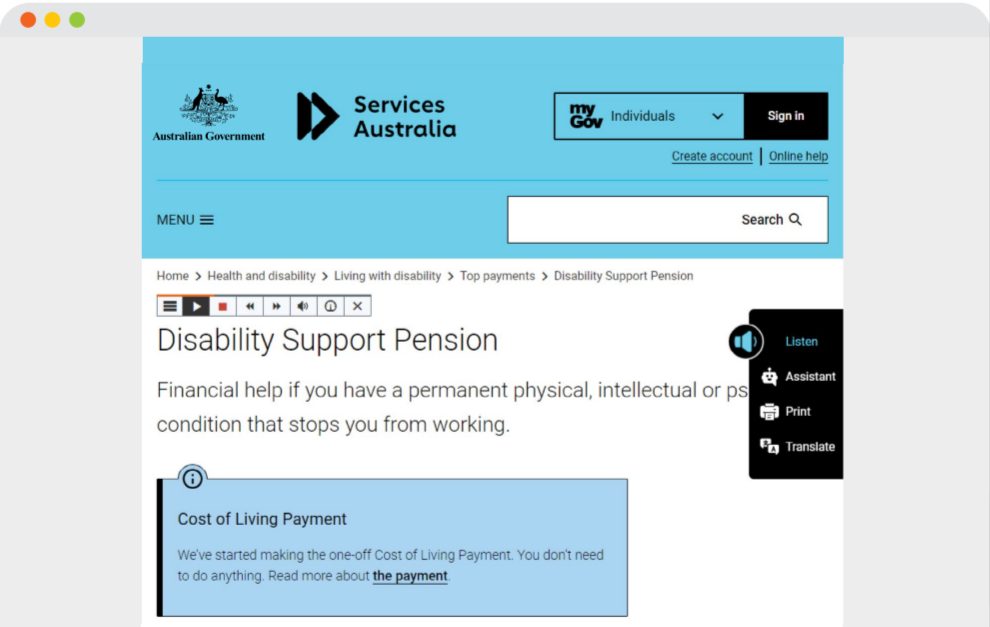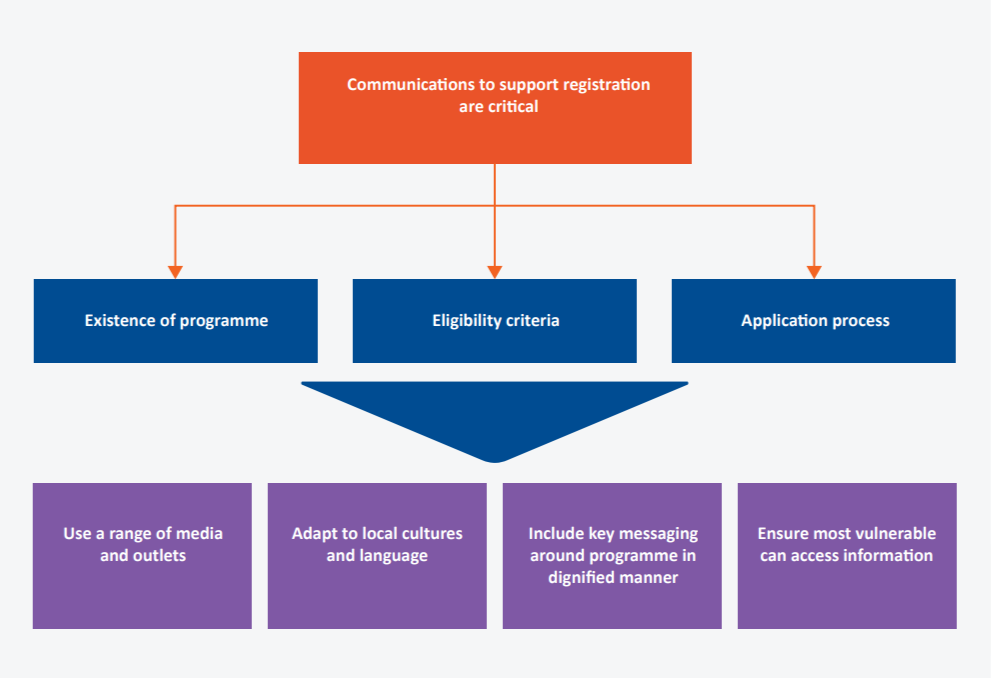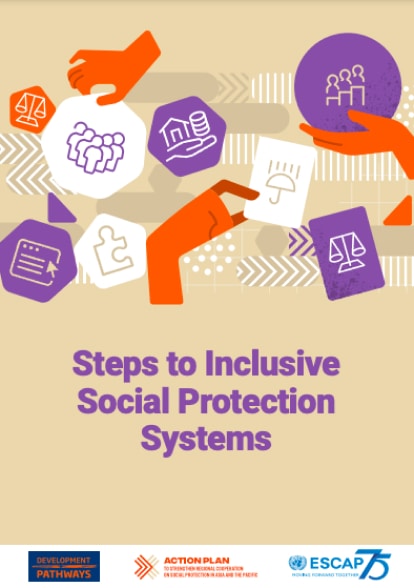What and why
Governments need to put strategic plans in place to ensure operational functions are supported by strong communications and outreach. Clear communication is critical to ensure the public is aware of existing social protection schemes, understand eligibility criteria, what they may receive and how to engage in the application process. Without effective and accessible communication, the full potential of the scheme will not be realized.
How
Effective communication ensures that a scheme reaches its potential so that those who are eligible become aware of the scheme and how to apply for it. It is equally important that those who are not eligible for the entitlement understand why. Getting communication right also improves operational efficiency, cultural sensitivity and coordination with a range of actors, as illustrated in Figure 5-1.
Managing the expectations of a scheme is essential to avoid mistrust and misunderstandings that lead to complaints and grievances, which negatively impact the social contract. Expectations can be managed most effectively when eligibility is kept as simple as possible and linked to the objectives of the scheme. This includes clear communication with beneficiaries about what they should expect to receive, and when. This is of particular importance for contributory benefits for which benefit levels are based on shared responsibilities between the government, employers and workers. For example, ensuring that future beneficiaries of an old age pension understand the impact of decisions to retire early, late or defer entitlements is key to manage expectations while also helping people to plan for their future.
All key actors involved in the development and implementation of a social protection scheme should have the same understanding of its objectives. These objectives should be clearly captured in a communications strategy and shared also with civil society organizations and representatives of diverse communities. A clear and shared understanding of scheme objectives will ensure all parties convey the same messaging on entitlements and service delivery.
Defining clear roles and responsibilities within a communications strategy contributes to increased accountability and better coordination and implementation. The communications strategy should be owned by the relevant communications focal point at the lead line ministry or implementing agency. All actors involved in registration, appeals and complaints, information management systems where beneficiary information must be kept up to date (Milestone 10), and payment systems (Milestone 7) will need to clearly understand their role in the communications strategy.
For communication strategies to be effective, they need to understand who the users of their information will be. This needs to go beyond those who are eligible to also include agencies and organizations, including civil society organizations, that engage with the intended users. Ensuring that the scheme’s implementers, partners and intended users receive tailored dissemination throughout the operational process is required to support efficiency.
Communication activities need to be designed to ensure that people in vulnerable situations can fully access information. This may require accessible and easy-to-understand information for persons with disabilities, while making sure that information is also broadcasted through television, radio, print media and direct engagement with civil society organizations. For example, oral messaging through radio and television can better reach those who are visually impaired or cannot read, while using print media and message boards can better target those who are hearing impaired. Visual messaging that limits text, using pictures and symbols to communicate messages can also reduce accessibility barriers for those who might not read. Radio and television messaging can also better reach those with physical disabilities that limit their movement. Ensuring agreed key messages are adapted to local culture and languages, including minority languages, is paramount to ensure that all people are made aware of the scheme.
FIGURE 5-1 Ensuring accessible information online

An example from the Government of Australia demonstrates one effort to provide information on the disability support pension in an accessible manner, highlighting the importance of making online information accessible to persons with disabilities.
FIGURE 5‑2 Communications to support registration


